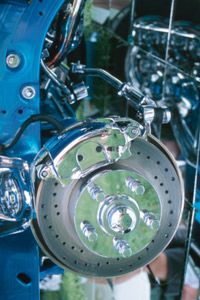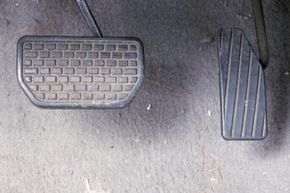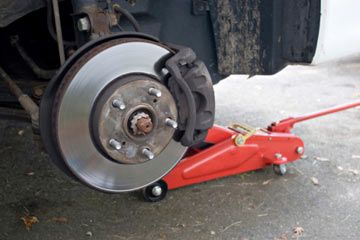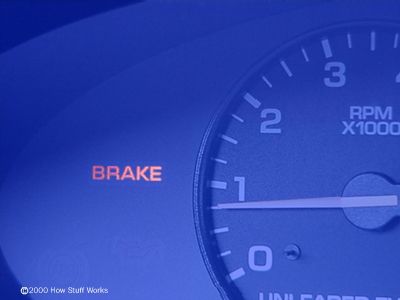If you're researching your car's brake system, most articles will tell you the same scary facts up front: By the time you discover your car has a brake problem, it's usually too late. Fortunately, the brake system is pretty simple, and it's easy to learn how to check the condition of different brake components.
You car's brakes are dependent on pressure and friction -- that's what makes the wheels come to a stop. When you step on the brake pedal, that pressure has to move quickly to the four corners of the car, carried around by fluid-filled brake hoses and brake lines. Generally, the metal brake lines get more attention; they're even available in dressed up and high-performance variations. But the simple rubber brake hoses are just as important to your car's safety.
Advertisement
Though brake hoses should last about six years, they're under a lot of stress. It's important to inspect them on a regular basis, so you can catch potential problems before the entire system fails. If there's a leak or crack in a brake hose, the loss of fluid will cause a drop in pressure (in other words, the brakes won't be there when you need them). Another danger of leaky hoses is that brake fluid is corrosive, so drips can cause damage elsewhere on your car.
Finding one faulty hose is usually an indicator that the whole hose network has been damaged or compromised, because they usually wear out at a consistent rate. If your testing turns up any damage, be prepared to replace all the hoses at once [source: BrakeQuip].
On the next page, we'll discuss where to find the brake hoses and how you can prepare yourself for an in-depth testing session.
Advertisement





